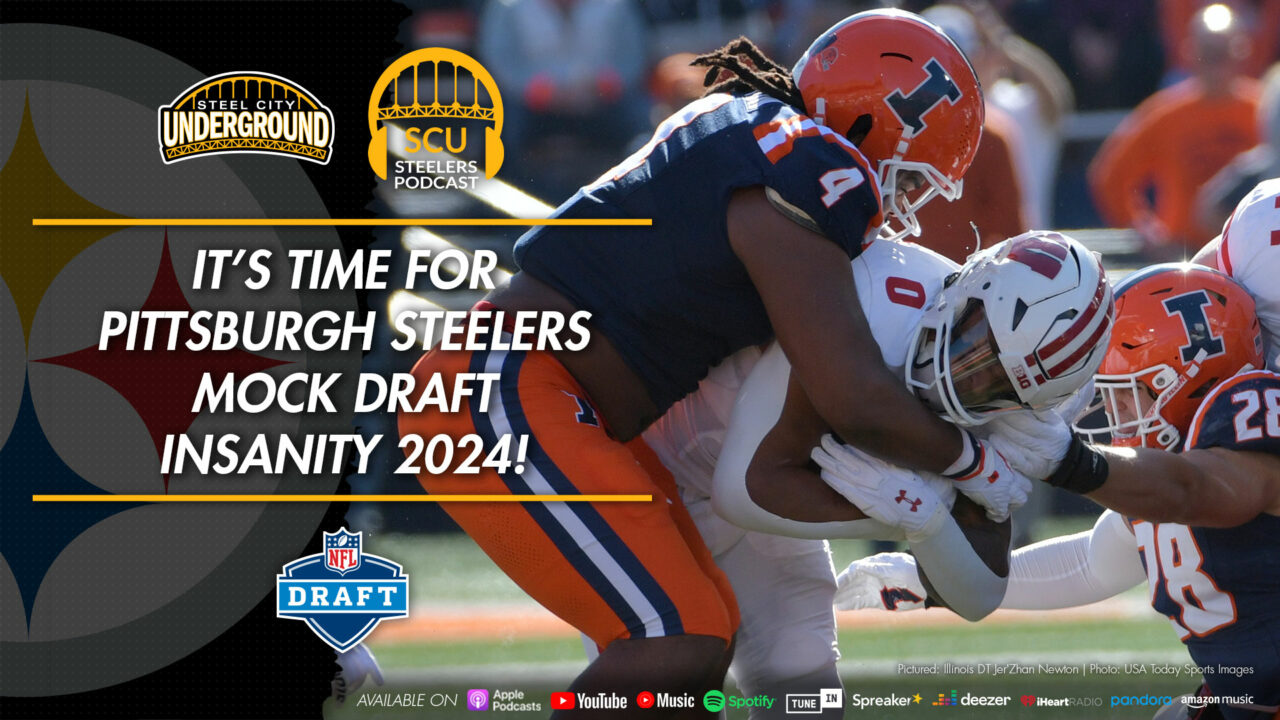NFL, Steelers Running Back Valuation Shifting with Uptick in Receiving vs Rushing Productivity
The true value of the NFL running back has been one of the most debated topics this off-season. Holdouts from superstars Le’Veon Bell, Ezekiel Elliott, and Melvin Gordon, initiated since last year, are evidence that top running backs in the league believe that they are being undervalued by NFL teams’ front offices and potentially by coaching staffs. Those same players have been heavily utilized in the passing game of their teams’ offenses as well as the run game.
So… who is right?
Is the running back position being undervalued in the modern game by teams based on the role that was formally given to players at that position (to carry the ball), or is there more to it? And how might that impact the Steelers moving forward?
The key may lay in how Pittsburgh, and other NFL teams, use their running backs outside of the offensive backfield.
The short answer is the role of running backs in driving wins likely is undervalued, but there is a catch. The impact of modern NFL running backs on team and offensive success is mostly an outcome of the receiving production they create, not run production. The days of utilizing running backs singularly to gain yards, and touchdowns, on the ground are likely over. Note that the top three teams at the end of last year also had the highest percentage of passing targets to running backs in the NFL, namely the New England Patriots, New Orleans Saints, and Los Angeles Rams. The team that most frequently targeted their running backs (31% of all passing targets), the Patriots, also happened to win that game at the start of February every year. What’s that called again? Oh, that’s right, the Super Bowl.
Need more convincing? Then consider that running backs with the three highest DYAR in 2018 (defensive adjusted yards above replacement) for receiving yards (with a minimum of 25 passes), a stat that calculates running back receiving yards compared to yards from replacements while adjusting for the quality of the defense, were Kareem Hunt (198, Kansas City Chiefs), Alvin Kamara (197, Saints), and James White (194, Patriots). Again, we see three of the final four teams in last years playoffs represented.
The importance of receiving productivity from running backs makes sense given the increasingly pass-heavy NFL. A reliable passing game to running backs that provide high-percentage receptions can offset over-zealous blitzing and spreads out defensive coverage – which provides more space and favorable matchups for other targets like wideouts, tight ends, and slot receivers.
How does this affect the Steelers?
Well, the good news is Pittsburgh’s James Conner was a respectable ninth place in DYAR for individual backs in that same category (minimum of 25 passes) during the 2018-2019 NFL season. The bad news? The Steelers targeted their running backs the fourth-fewest times in the league last season in a period where four of the bottom five teams missed last year’s playoffs. Conner’s DYAR was 112. Jaylen Samuels‘ DYAR was 79 (ranked 14th).
The Houston Texans were the one outlier, and they lost in the first round of the playoffs.
As the Steelers transition to the meat of the preseason, Randy Fichtner must prioritize adjusting the offense to further involve the running backs in the passing game. Last year, about 25% of Ben Roethlisberger‘s targets went to Antonio Brown, so there will be extra targets available to shift to, including the Steelers running backs, this year. This means Fichtner must provide consistent opportunities to running backs Conner, Samuels, and rookie Benny Snell. The relative pass-catching productivity from Pittsburgh’s running backs could be the single biggest factor that drives the Steelers’ success this year, beginning during the preseason and throughout the regular season, and could also be the best tool for determining the valuation of players at that position.
Prioritizing pass-catching productivity from their running backs will not only help the Steelers move the ball, but could also completely change the trajectory of Pittsburgh’s offense by removing the number of double and triple coverages on JuJu Smith-Schuster. It will also free up receivers like James Washington, Donte Moncrief, and Ryan Switzer while allowing Vance McDonald and other tight ends to get into the mix.
An obvious question at this point, though, is what specifically should the Steelers do on offense to get their running backs more involved in the passing game? Here are a few non-mutually exclusive options.
Option 1
Intermix two-back formations with Conner and Samuels in the backfield and McDonald lined up in various formations at tight end. The combined attention from McDonald driving his routes downfield and Conner and Samuels stretching the field vertically and horizontally could cause nightmares for opposing defenses. About three days after writing this article, Roethlisberger confirmed such a plan may be in the works.
Option 2
Intermix the successful shovel passes that the Steelers have run the last couple of years with more traditional and slow-developing screen passes. This approach could help keep opposing defenses honest by punishing both immediate and delayed blitzes and would be easy to implement if Option 1 occurs.
Option 3
Run the ball while using it to mix in more play-action passing. It’s no secret that Roethlisberger threw the ball a lot last year. And by a lot, I mean more than any other quarterback active in the league in 2018. 5130 yards on 675 attempts. While every team but one threw more often than they ran last year, there needs to be more balance between simply running the ball and utilizing the running backs to create offensive formation mismatches and opportunities.
Don’t think there is a relevant soft spot between run-heavy and pass-heavy offense? Then consider that Patrick Mahomes, Tom Brady, and Jared Goff were ranked 7th, 9th, and 10th in passing attempts in 2018 and all three quarterbacks started in the Super Bowl or the AFC championship game.
Conclusion
Regardless of the options available versus what is chosen by Pittsburgh and other NFL teams, in the end, receiving productivity of running backs alongside a healthy mix of running out of the backfield may be the key offensive X factor for the foreseeable future.
In my humble opinion, productivity out of the backfield should substantially improve the Steelers’ 2019 offense. Apparently, given recent comments by Roethlisberger and Fichtner, the Steelers agree. A highly successful effort to involve the Steelers running backs in the passing game would mean Steelers fans should get ready to watch a merry, long season and a deep playoff run in 2019-20.









